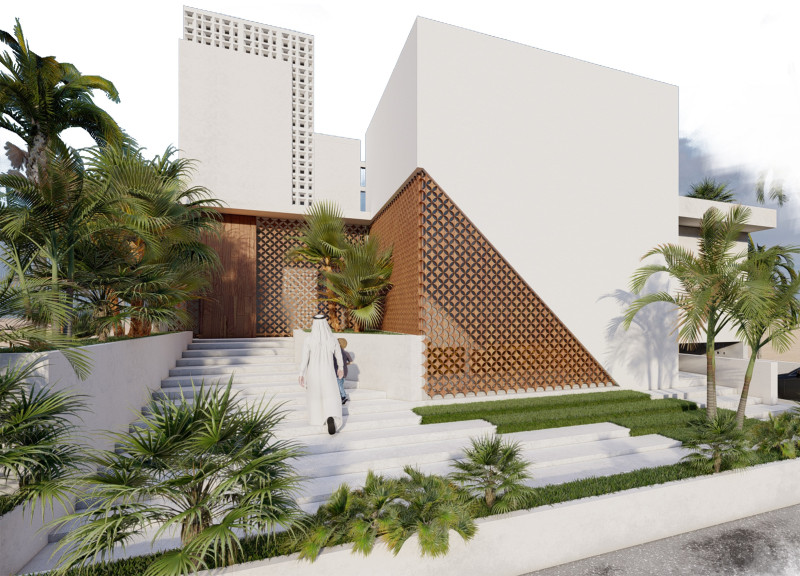5 key facts about this project
From a functional perspective, the project is designed to accommodate [describe the primary function, such as residential, commercial, educational, or community-based purposes]. It features a layout that organizes space in a manner conducive to [explain how the layout facilitates interaction, productivity, or relaxation relevant to the function]. The architectural flow is expertly crafted, allowing occupants to navigate seamlessly from public to private areas, promoting both efficiency and comfort.
A keen focus on user experience is evident throughout the architecture. Each area within the structure is meticulously planned to fulfill specific needs while promoting a sense of belonging. Natural light plays a vital role in the design strategy, with large windows and open spaces that not only enhance the aesthetic appeal but also reduce the reliance on artificial lighting. This deliberate incorporation of daylighting is a fundamental aspect of the architectural design, encouraging a connection to the outdoors and fostering an inviting atmosphere.
The materiality selected for this project reflects a thoughtful approach that considers both visual impact and environmental implications. A combination of concrete, wood, glass, and steel is employed, where concrete serves as the primary structural element, providing durability and strength. Timber accents introduce warmth and texture, making the spaces feel more inviting while supporting local sourcing principles. Extensive use of glass ensures that views of the surrounding landscape are maximized, allowing for a visual dialogue between the interior and exterior environments. Additionally, steel supports critical structural components while also granting a sleek aesthetic to the design.
One unique aspect of this architectural project is its sustainable features. Thoughtful incorporation of passive and active design strategies is evident. The building is equipped with energy-efficient systems, including potential solar panels and green roofing options, designed to minimize its environmental footprint. These considerations enhance the overall performance of the structure, aligning it with contemporary sustainability standards. The approach not only addresses current ecological concerns but also anticipates future regulatory demands, illustrating a forward-thinking mindset in the architectural design.
Furthermore, the architecture exhibits a careful engagement with the local context and cultural identity. The design philosophy pays homage to regional architectural traditions while integrating modern elements. This blend fosters a sense of place, inviting occupants and visitors to connect with the local heritage while interacting with contemporary design language.
Public areas within the structure are purposefully designed to encourage community interaction. Concepts of shared spaces are highlighted, enabling users to gather and connect, reinforcing community ties. This emphasis on social interaction is crucial for the project, as it seeks to establish itself not merely as a building but as a vital part of the community fabric.
The project’s architectural ideas extend beyond mere functionality. They convey a narrative of sustainability, user comfort, and cultural relevance. Each detail, from the intricate facade to the meticulously planned interiors, reinforces the overarching vision, solidifying the building’s role within its environment. With a balanced approach that respects the past while looking toward the future, this design demonstrates the potential of architecture to elevate both individual experiences and communal engagement.
For further insights and a deeper understanding of the architecture, readers are encouraged to explore architectural plans and sections that detail the meticulous design processes and ideas that shaped this project. Engaging with the architectural designs will provide a comprehensive view of how each element contributes to the holistic vision of the architecture, yielding a rich overview of this noteworthy addition to the built landscape.


 Rita Touma
Rita Touma 























